Vietnamese people have a strong religion in Buddhism. That is the reason why we see many pagodas & temples in Hanoi. In Vietnamese, there are many kinds of worship. Temples and pagodas are the most popular ones. Today, we will have an overview of the top famous religious places in this country’s capital.
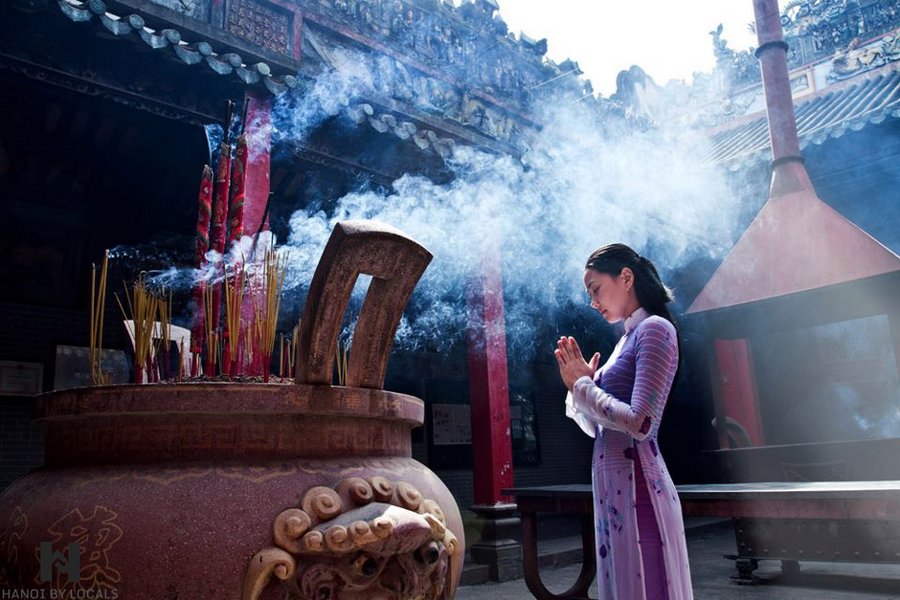
The difference between Pagodas & Temples
Vietnamese people worship not only Buddha but also famous kings, good mandarins as well as heroes and heroines. There are temples and pagodas, from small to huge ones for each praying. Not only the old but also the young come to visit these places, to wish for peace and good things in life.
A pagoda is a place for monks and nuns to propagate Buddhist rituals. If you are a Buddhist or not, you can still come to visit and practice these activities.
A temple is a kind of architecture for worshipping not only deities but also historical figures because Vietnam patriotism is excellent so there are many temples for heroes and heroes.
Here are the top sacred and famous pagodas & temples in Hanoi
In this part, we will talk about the most renowned religious places in the Hanoi capital. It is just a shortlist, to have an overview of the spiritual life of Vietnamese.
Temple of Literature (Van Mieu)
- Address: 58 Quoc Tu Giam str, Dong Da district, Hanoi (Map)
- Opening time: Summer (07:30 – 18:00), Winter (08:00 – 18:00)
- Entrance fee: 30.000 VND/ person (Free for children under 15-year-old)
Van Mieu, also known as the Temple of Literature, pagoda des Corbeaux or Confucian temple in the past, was built-in 1070, a very long time ago. The first usage of this area was to educate thousands of Vietnamese mandarins. That is the first university in Vietnam, as well as Vietnamese pride until now.
The temple of Literature functioned for a long time, approximately 700 years. Nowadays, this temple is open for tourism. Many tourists come to visit it each year. Students also often come to pray for their next test, with a strong belief.
The design of Van Mieu is based on the temple concept at Qufu, Shandong, in China. That is the birthplace of the famous figure, Khong Tu.
The temple has five courtyards. The first two are home of green trees, and the third one is famous for its “well of heaven clarity.” The holds 82 steles with names, ages, and birthplaces of doctors from 1484 to 1780. The next courtyard is the place of many pavilions. And the rest of the courtyard is the first university for Vietnamese people.
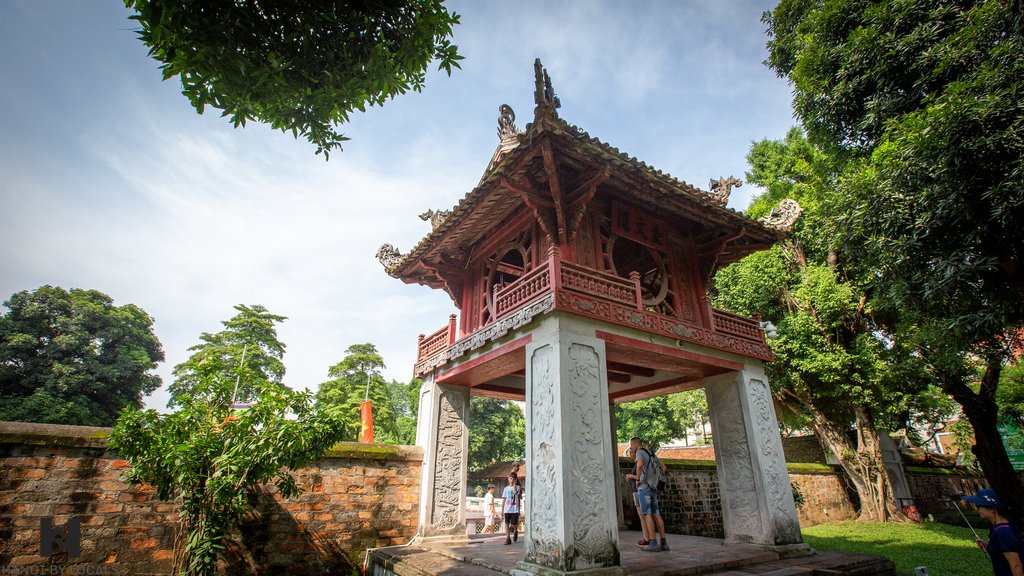
Quan Thanh Temple
- Address: Thanh Nien street, near Westlake Hanoi (Map)
- Opening time: 08:00 – 17:00
- Entrance fee: 10.000 VND/ person
Quan Thanh temple is also called Tran Vu Temple. It is the only Taoist temple among our list of pagodas & temples in Hanoi today. The temple was built in the 11th century and still has functioned now. In the past, this was considered in the top 4 most sacred temples in Thang Long citadel.
It is said that Quan Thanh was built to distribute to Tran Vu, the north saint of Taoism. Although it is a Taoist temple, it was changed and renovated quite much.
The central part of this temple is the courtyard with a giant banyan tree, including a shrine dedicated to Tran Vu, with his high statue. People often come to visit this, as the second biggest statue (bronze statue) of Vietnam. The statue is 13 feet and about 7000 Ib.
Another feature of the temple is its ancient text from the 17th and 18th centuries. You can read this to discover the spiritual life of Vietnamese, through couplets and poems.
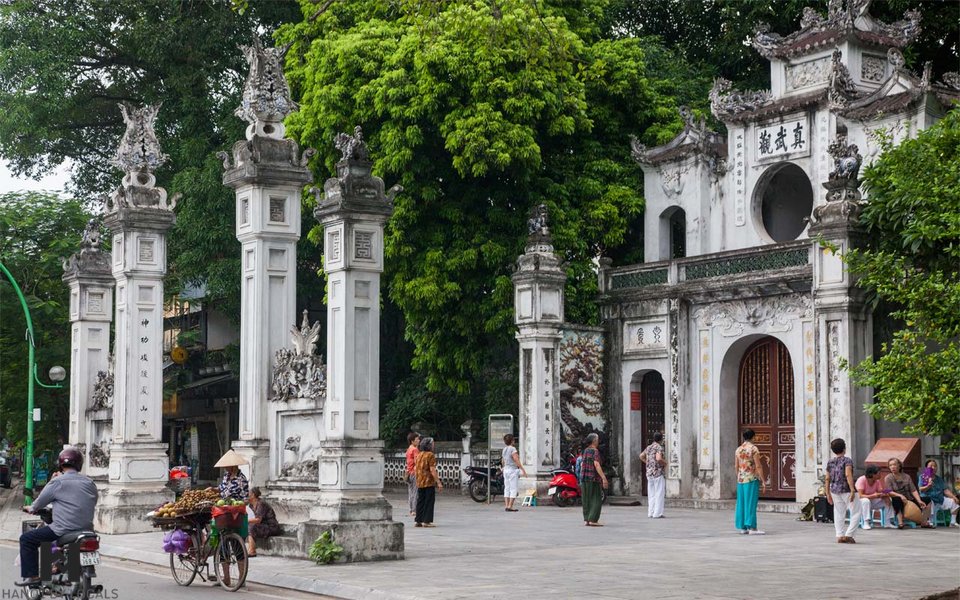
Tran Quoc pagoda
- Address: Thanh Nien street, near Westlake, Hanoi (Map)
- Opening time: 08:00 – 16:00
- Entrance fee: 5.000 VND/ person
Among the top pagodas & temples in Hanoi, Tran Quoc is the most ancient one. The pagoda was built in the 6th century, under the Ly dynasty. Tran Quoc, in Vietnamese, means “to protect the country.” In the past, this was used for kings and royal families to enjoy festivals, such as Lunar New Year.
The design of the Tran Quoc pagoda features a high pagoda, with 11 levels. You can also see other small pagodas for historical relics. There are many green trees around the pagoda.
Nowadays, this temple is open for tourists, monks, and nuns. It is free and is an attractive tourist place. You can visit the Tran Quoc pagoda from 8:00 AM until 4 PM late in the afternoon.
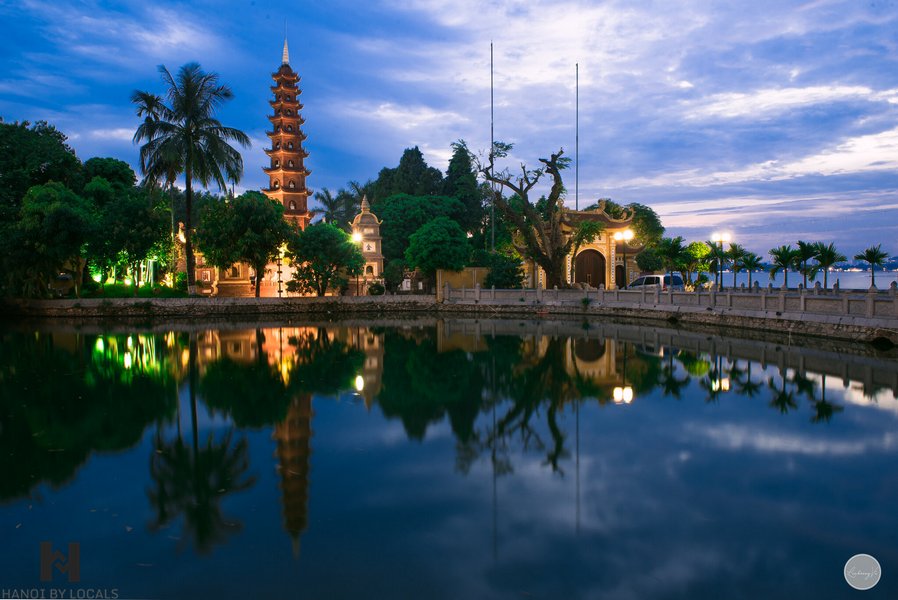
Bach Ma (White Horse) Temple
- Address: 76 Hang Buom str, Hanoi Old Quarter (Map)
- Opening time: 09:00 – 17:30
- Entrance fee: Free
As its name suggests, this temple was built in the 11th century to worship a White Horse. This horse had led Ly Thai To King to the area that we have now known as the Old Quarter in Hanoi. Bach Ma temple is known as the oldest temple in this noisy capital of Vietnam. It was reconstructed in the 18th century.
The design of the Bach Ma temple is simple. All the doors are made of wooden, stable, and painted in colours. Inside the temple, the red-lacquered funeral palanquin stands out in the middle, easy to be seen.
Although this is such a small temple, Bach Ma still attract many people to come. It was, in fact, one of the top 4 most sacred temples in Thang Long citadel. Nowadays, many people still come and pray in this small temple. The open time is from Tuesday to Sunday, from 7 AM to 5 PM.
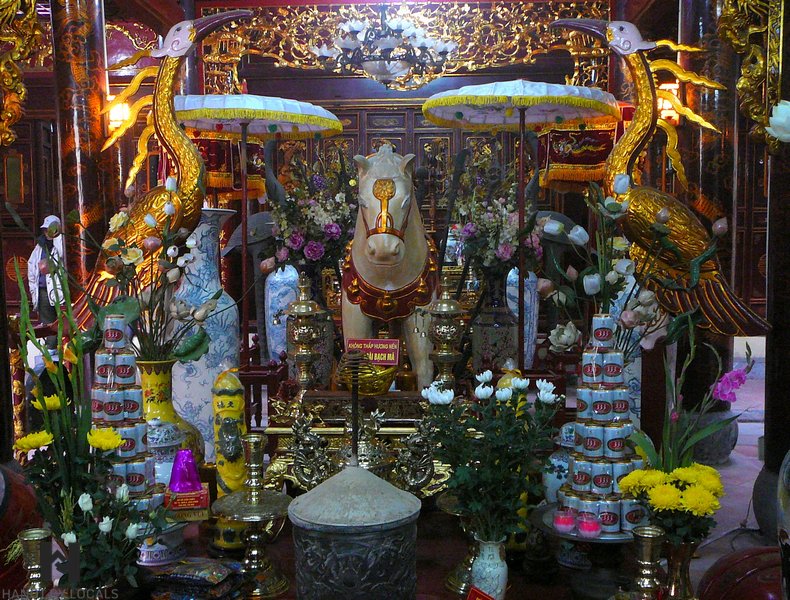
Ba Da Pagoda (Stone Lady Pagoda)
- Address: 03 Nha Tho str, Hanoi Old Quarter (Map)
- Opening time: 07:30 – 20:30
- Entrance fee: Free
Ba Da Pagoda (Stone Lady Pagoda) locates in Nha Tho street, Hanoi Old Quarter, just a short walk from St Joseph Cathedral Hanoi. You can find the pagoda by walking into a small alley on Nha Tho street (opposite Starbuck coffee).
The pagoda dates back to the year 1056, under the reign of King Ly Thanh Tong, the name Ba Da pagoda (Stone Lady Pagoda) was given when building the walls of the new citadel, and a stone was discovered that resembled a woman.
On the first day and mid-day (15th) of the lunar month, many locals visit pagoda to worship and practice meditation or listen to monk’s lectures. Locals come here to burn the incense and pray for the best things in their liver health, wealthiest and happiness.
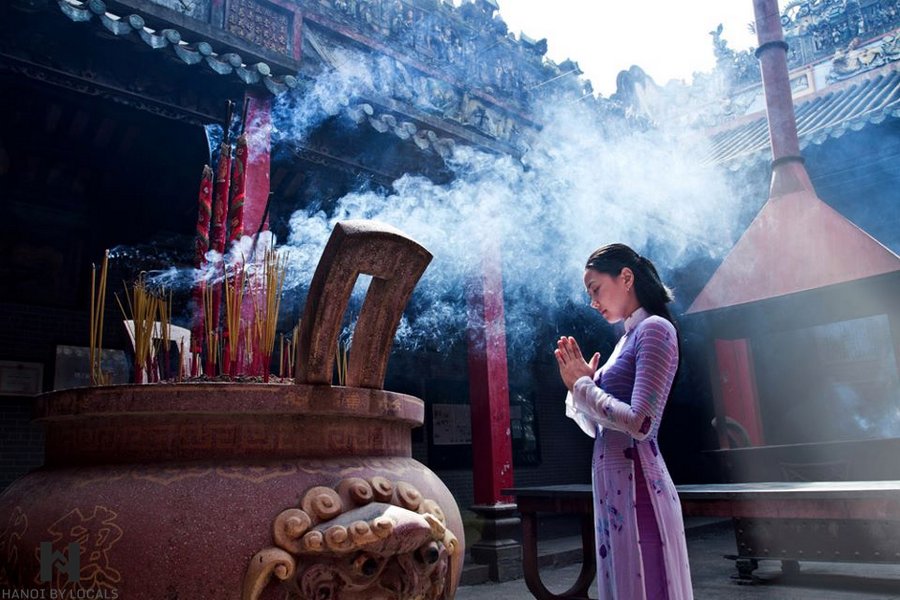
>> Read more about Ba Da Pagoda
Perfume Pagoda (Chua Huong)
- Address: Huong Son, My Duc District, Hanoi (Map)
- Opening time: 08:00 – 18:00
- Entrance fee: 130.000 VND/ person including entrance ticket and boat trip ( Cable car: 180.000 VND/ person)
Huong pagoda locates in Huong Son, My Duc, Hanoi. From Hanoi city, you need to drive for a short time to get to the area. Among pagodas & temples in Hanoi, this is the first place Buddhist all around the country.
Huong Pagoda is one of the most significant pagodas in Vietnam. It includes a list of small pagodas and Buddhism shrines. The pagoda is famous for its name (Perfume), as well as its holiness. Every year, from February to March (Lunar Calendar), people flow to the pagoda to pray for happiness and peace all year round.
There are many great places to visit in this complex: Pier Duc, Yen Stream, Huong Tru pagoda, Huong tich cave, and so on. Huong Tich grotto means the traces of the fragrance. The features of this destination are the statue of Avalokitesvara as well as a bronze bell.
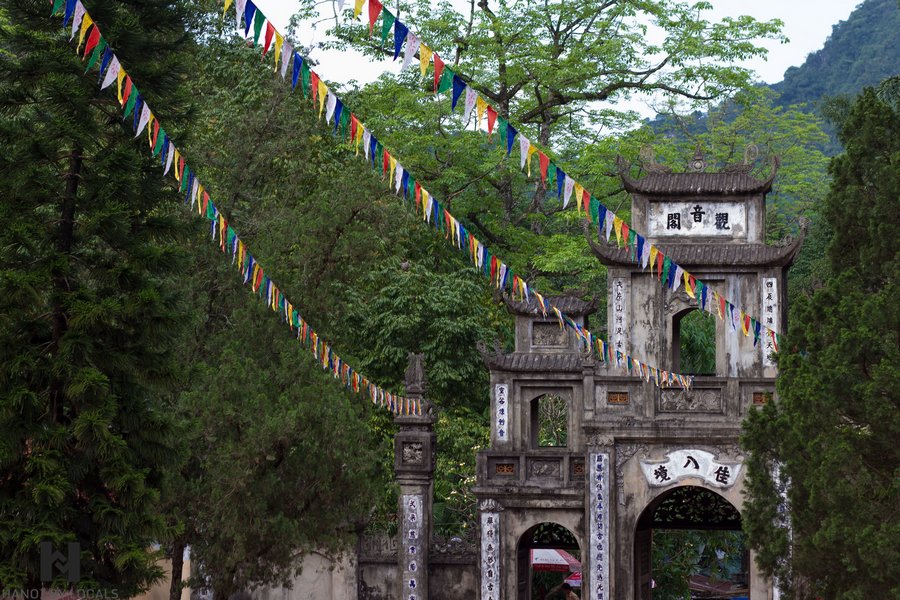
Thay pagoda (Chua Thay)
- Address: Sai Son, Quoc Oai District, Hanoi (Map)
- Opening time: 08:00 – 18:00
- Entrance fee: 15.000 VND/ person
Thay pagoda was built in the 11th century to worship a monk named Tu Dao Hanh. This unique pagoda was established under the Ly dynasty, with a legend about it. Tu Dao Hanh was a good monk who came across many places to help people. In his last years, he chose Sai Son as his home and at last, died in 1116. To memorize this man, on the 7th March (Lunar Calendar), there is a festival held.
To discover Thay pagoda, you can spend time in two different parts. The main one is the lower area, which includes three small pagodas. The higher part has another pagoda inside the cave. At Thay pagoda, you can not only discover the Vietnamese religion but also enjoy a water puppet show if you want.
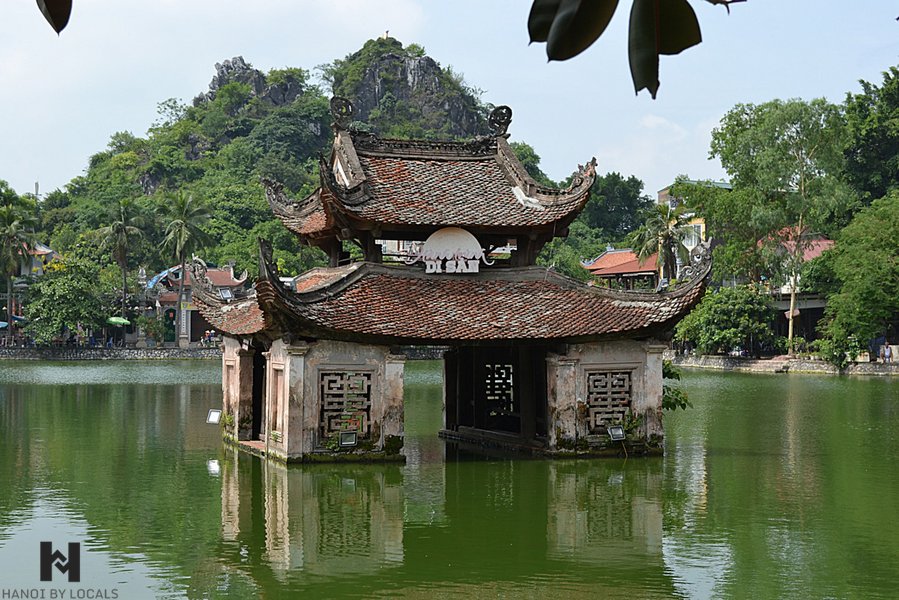
Tips for visiting pagodas & temples in Hanoi
Because both pagodas and temples are religious places, we should notice these small tips to make sure you can be a smart visitor.
- Do not take anything from the pagoda or temple out.
- Wear a long dress and formal clothes.
- Take shoes off if it is a must( just in some places).
- Use the right and left doors, not the central ones.
- Pay your respect to the deities.
- Do not make a noise.
- Do not touch any statues.
- Stroll, don’t run or make loud laughs.
- No smoke
With a list of top pagodas & temples in Hanoi we have shared, will you decide to have your next tour to these areas? If yes, get your package and read this! Good luck!
